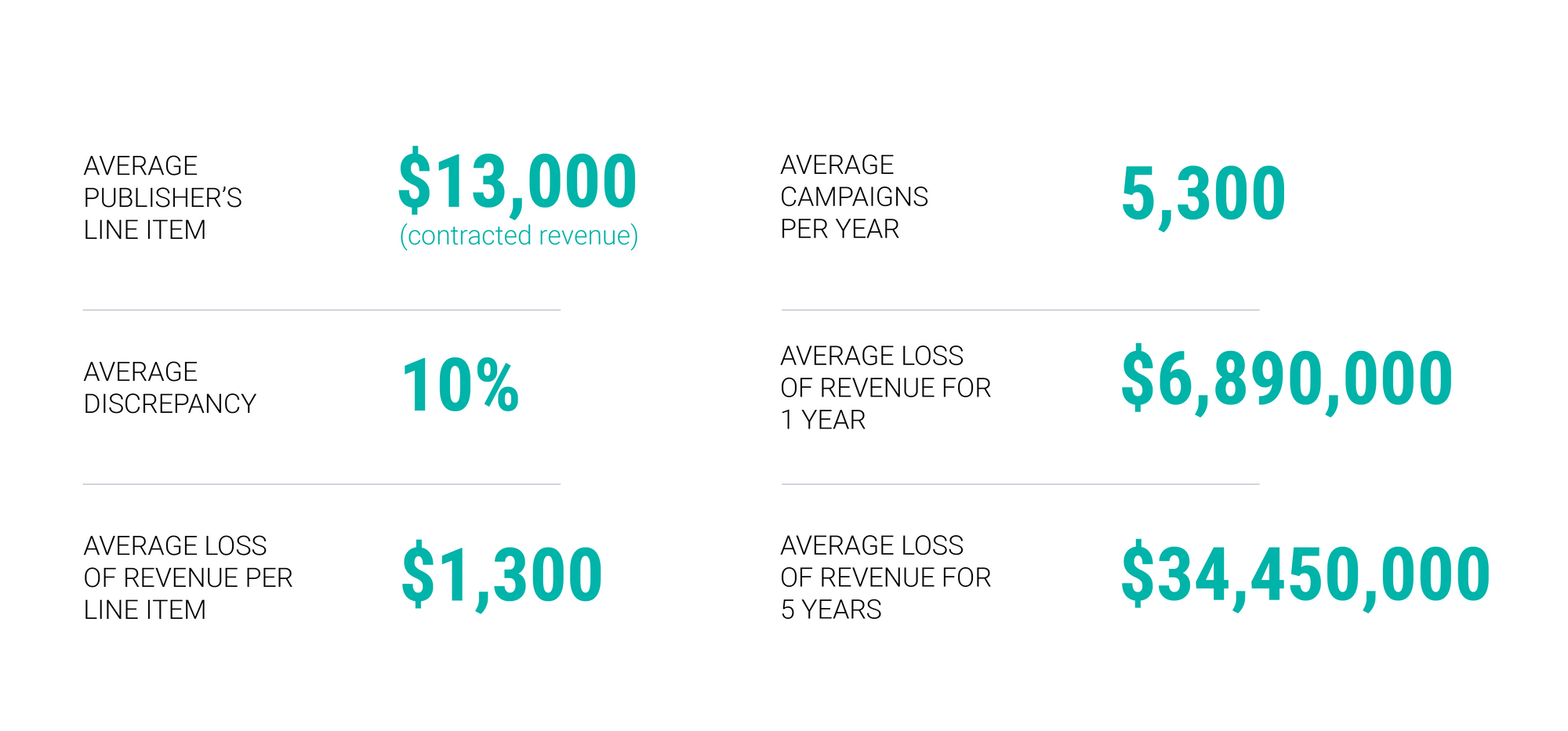Discrepancies are an unfortunate reality of the billing process in digital advertising. As long as your campaigns are billed according to anything other than a first-party ad server, not every line item is going to line up. But real problems can start to emerge when they are allowed to fester into legitimate obstacles that impact your ability to deliver on campaigns.
In order to prevent this, you need effective processes and a well-equipped ad ops team to identify and correct discrepancies whenever and wherever they appear…because they will appear!
A Crash Course on Discrepancies and Potential Causes
In a nutshell, discrepancies are the result of a local (publisher) ad server and a third-party (advertiser) server with conflicting data about delivered impressions. Usually, one server either omits the impression entirely or records it in a different way, but the end result is always the same; an incongruent count that must be resolved.
With the number of different parties involved, and the different systems that those parties might have in place, discrepancies can come from a number of different variables, including:
- Bad markup code
- Missing or incorrect tags and mappings
- Poor performing scripts
- Poor performing tracking pixels
- Excessive use of trackers and scripts
- General server latency
- Misfires
When discrepancies arise, they generally come in two forms: under and over. Under discrepancies occur when the agency or brand’s number is reporting below the publisher’s number, while over discrepancies occur when the agency or brand’s number is coming in over the publisher’s number. The actual difference between the buyer’s and seller’s numbers is the biggest clue to what the underlying issue might be.
UNDER DISCREPANCIES
OVER DISCREPANCIES
The Negative Impact of Discrepancies on Operations and Revenue
One of the most significant problems caused by discrepancies is an unclear picture of your available impressions at any given time. Impressions are finite, and without a reliable count, you could end up over or under delivering on your commitments to your buyers. Either outcome can bog down your operations, especially if they’re addressing inaccurate forecasting and ineffective pacing across multiple campaigns. But the bigger factor that all these issues contribute to is the negative impact on revenue.
Over delivery means you are providing more impressions than the amount to which you are contracted. Basically, you are essentially giving away impressions that you could have sold for profit. Not only does this negatively affect your revenue, it also muddies your yield management capabilities.
Conversely, under delivery means you are not delivering enough impressions to meet your end of a contract. This can have obvious financial consequences as you scramble for costly make-goods, but it can also impact your reputation with advertisers and brands. Not filling your contracts effectively can make it harder to establish trust and build long-term partnerships with high-priority buyers.
These issues can both happen at the same time, and as a result of one another. For instance, over delivering on one contract could leave you without the impressions that you need to fulfill another. Plus, the larger the scale of your operations, the harder the hit to your bottom line.

Best Practices: What Can Be Done about Discrepancies?
Due to the snowball effect that discrepancies can have, it’s important to be proactive about the people and processes you have in place to keep them in check. The ability to resolve discrepancies as quickly as possible is pivotal to preserving operational efficiency and optimizing revenue.
Limit Reliance on Buffers
The average buffer can run up to 15% of any line item. That can be a big gap to cover, especially if you’re working with limited inventory. With an effective discrepancy plan in place, you may consider keeping your buffers as small as possible in order to maximize impression solvency while minimizing delivery constraints.
Empower Your Ad Ops
A valuable way to gain the confidence you need to limit buffers is ensuring that your ad ops team is equipped with the right tools. Invest in solutions that can identify, report, and reconcile discrepancies. All-in-one solutions that prioritize ease of use are a great way to cut down on the time and training needed to get your ad ops up to speed.
Monitor, Monitor, Monitor
As Hamlet said, “The readiness is all.” Keep an effective lookout by executing your discrepancy and inventory optimization processes frequently. Many publishers today do this on a daily basis in order to be as certain as possible that they’re staying ahead of any potential problems.
Conclusion
For any publisher, much depends on their ability to deliver impressions on time and in the correct amount. This is especially true when operating at a premium publisher’s scale. Without a strong discrepancy plan in place to keep a firm grip on available impressions, operations can get very strained, very quickly.
Fortunately, a little extra investment of time and resources up front can pay dividends for years to come as you complete campaigns and realize more of your revenue potential. Compared to the millions of dollars that discrepancies can end up costing over time, that’s an investment easily worth making.
Want to learn about how DV Publisher Suite enables teams to proactively manage discrepancies? Or, do you want to learn more about DVPS in general? Schedule a demo with us today!






